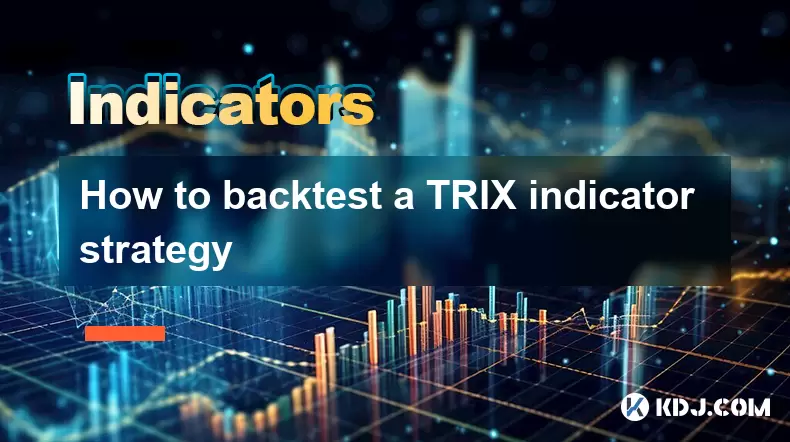-
 Bitcoin
Bitcoin $117,462.8204
-2.03% -
 Ethereum
Ethereum $3,061.1595
1.10% -
 XRP
XRP $2.9139
-2.19% -
 Tether USDt
Tether USDt $1.0002
0.02% -
 BNB
BNB $685.1357
-1.24% -
 Solana
Solana $161.3803
-2.11% -
 USDC
USDC $1.0002
0.04% -
 Dogecoin
Dogecoin $0.1948
-2.92% -
 TRON
TRON $0.2987
-0.89% -
 Cardano
Cardano $0.7330
-1.27% -
 Hyperliquid
Hyperliquid $47.7888
0.13% -
 Stellar
Stellar $0.4514
-2.93% -
 Sui
Sui $4.0169
2.74% -
 Chainlink
Chainlink $15.7088
-2.57% -
 Hedera
Hedera $0.2356
-3.33% -
 Bitcoin Cash
Bitcoin Cash $488.6656
-3.61% -
 Avalanche
Avalanche $21.2955
-1.47% -
 UNUS SED LEO
UNUS SED LEO $9.0415
0.42% -
 Shiba Inu
Shiba Inu $0.0...01332
-0.82% -
 Toncoin
Toncoin $3.0124
-0.62% -
 Litecoin
Litecoin $94.2175
-2.07% -
 Polkadot
Polkadot $4.0011
-0.61% -
 Monero
Monero $333.5714
-3.46% -
 Uniswap
Uniswap $9.1114
-1.56% -
 Dai
Dai $1.0000
0.02% -
 Ethena USDe
Ethena USDe $1.0005
0.00% -
 Bitget Token
Bitget Token $4.4951
1.87% -
 Pepe
Pepe $0.0...01242
0.47% -
 Aave
Aave $321.9943
0.51% -
 Bittensor
Bittensor $434.1984
5.13%
How to backtest a TRIX indicator strategy
The TRIX indicator helps identify momentum shifts and potential trend reversals through triple exponential smoothing, offering trade signals via zero-line crossovers and divergence patterns.
Jul 16, 2025 at 04:22 am

Understanding the TRIX Indicator
The TRIX (Triple Exponential Moving Average) indicator is a momentum oscillator used in technical analysis to identify oversold and overbought levels, as well as potential trend reversals. It is calculated by applying a triple exponential smoothing to a moving average of price data. The resulting line oscillates around a zero line, with positive values indicating bullish momentum and negative values signaling bearish momentum.
Key components of the TRIX indicator include:
- A 14-period EMA (Exponential Moving Average) applied three times
- A signal line, typically a 9-period EMA of the TRIX line
- Zero line crossovers and divergences for trade signals
Before backtesting any strategy involving TRIX, it’s essential to understand how the indicator behaves under different market conditions and timeframes.
Selecting a Trading Platform or Backtesting Tool
To effectively backtest a TRIX-based trading strategy, you need a robust platform that supports custom indicators and historical data testing. Popular platforms include TradingView, MetaTrader 4/5, Python-based libraries like Backtrader or PyAlgoTrade, and QuantConnect.
Steps to set up your environment:
- Choose a platform that allows integration or coding of the TRIX indicator
- Ensure access to high-quality historical data relevant to your asset class (crypto, forex, stocks)
- Confirm the platform supports strategy automation and performance metrics
Each platform has its own scripting language or API. For instance, TradingView uses Pine Script, while Python-based tools use standard Python syntax with specialized finance libraries.
Defining Your TRIX-Based Strategy Rules
A successful backtest requires clearly defined entry and exit rules based on the TRIX indicator. Common strategies involve:
- Zero Line Crossover: Buy when TRIX crosses above zero; sell when it crosses below
- Signal Line Crossover: Enter long when TRIX crosses above its signal line; short when it crosses below
- Divergence Detection: Look for price making new highs/lows without corresponding TRIX movement
Important parameters to define:
- Timeframe (e.g., 1-hour, 4-hour, daily)
- TRIX period length (default is 14)
- Signal line period (usually 9)
- Stop-loss and take-profit levels
- Position sizing rules
These parameters should be documented precisely to ensure consistency during the backtest.
Implementing the Strategy in Your Chosen Platform
Once the strategy logic is clear, the next step is to code or configure it within your selected platform. Here's an example using TradingView's Pine Script:
//@version=5
strategy("TRIX Strategy", overlay=true)length = input.int(14, title="TRIX Length")
signalLength = input.int(9, title="Signal Line Length")
src = close
ema1 = ta.ema(src, length)
ema2 = ta.ema(ema1, length)
ema3 = ta.ema(ema2, length)
trix = ta.change(ema3) / ema3[1] * 100
signal = ta.sma(trix, signalLength)
plot(trix, color=color.blue, title="TRIX")
plot(signal, color=color.red, title="Signal Line")
// Strategy Conditions
longCondition = trix > signal
shortCondition = trix < signal
if (longCondition)
strategy.entry("Long", strategy.long)
if (shortCondition)
strategy.close("Long")
This script defines a basic TRIX crossover strategy. Adjustments can be made to include stop-loss, trailing stops, or divergence detection.
For Python-based systems like Backtrader, you would calculate the TRIX using pandas and implement the same logic programmatically.
Analyzing Backtest Results and Performance Metrics
After running the backtest, analyze key performance metrics to evaluate the effectiveness of your TRIX-based strategy. Most platforms provide reports that include:
- Total trades executed
- Win rate percentage
- Risk-reward ratio
- Maximum drawdown
- Net profit/loss
- Sharpe Ratio
Critical aspects to assess:
- Consistency across multiple market cycles
- Sensitivity to parameter changes (robustness test)
- Equity curve shape (smooth vs. volatile)
- Trade frequency and execution slippage
You may also want to compare your TRIX strategy against a benchmark, such as a buy-and-hold approach or another technical strategy, to determine if it adds value.
Frequently Asked Questions
Q: Can I backtest a TRIX strategy on Binance or other cryptocurrency exchanges?
Yes, but you’ll need to export historical candlestick data from the exchange and import it into a compatible backtesting tool like TradingView, MetaTrader, or Python-based frameworks.
Q: How do I handle divergence between price and TRIX in backtesting?
Divergence detection usually requires additional logic in your script or model. You can code conditions that check for discrepancies between price swing highs/lows and TRIX swing points.
Q: Does the TRIX indicator work better on certain timeframes in crypto markets?
TRIX tends to perform better on higher timeframes like 4-hour or daily charts due to reduced noise. However, optimal settings depend on the specific cryptocurrency and volatility characteristics.
Q: Is it possible to combine TRIX with other indicators for improved accuracy?
Absolutely. Traders often combine TRIX with volume indicators like OBV or trend filters like ADX to confirm signals and reduce false positives.
Disclaimer:info@kdj.com
The information provided is not trading advice. kdj.com does not assume any responsibility for any investments made based on the information provided in this article. Cryptocurrencies are highly volatile and it is highly recommended that you invest with caution after thorough research!
If you believe that the content used on this website infringes your copyright, please contact us immediately (info@kdj.com) and we will delete it promptly.
- GameStop, Bitcoin, and the Inflation Hedge: A New York Perspective
- 2025-07-16 08:30:12
- Solana Memecoins Hit the Big Time: PUMP and Sonic Get Coinbase Listing Boost!
- 2025-07-16 06:50:12
- Core Foundation's Rev+: Fueling Ecosystem Growth Through Revenue Sharing
- 2025-07-16 06:30:17
- Ripple, California, and Collaboration: A New Era for Crypto?
- 2025-07-16 06:30:17
- Uniswap, Mary-Catherine Lader, and the DeFi Evolution: What's Next?
- 2025-07-16 07:10:12
- Roman Storm, DPRK Hackers, and Prosecutors: A Tangled Web
- 2025-07-16 06:50:12
Related knowledge

Advanced RSI strategies for crypto
Jul 13,2025 at 11:01am
Understanding the Basics of RSI in Cryptocurrency TradingThe Relative Strength Index (RSI) is a momentum oscillator used to measure the speed and chan...

Crypto RSI for day trading
Jul 12,2025 at 11:14am
Understanding RSI in the Context of Cryptocurrency TradingThe Relative Strength Index (RSI) is a momentum oscillator used to measure the speed and cha...

Crypto RSI for scalping
Jul 12,2025 at 11:00pm
Understanding RSI in the Context of Crypto TradingThe Relative Strength Index (RSI) is a momentum oscillator widely used by traders to measure the spe...

What does an RSI of 30 mean in crypto
Jul 15,2025 at 07:07pm
Understanding RSI in Cryptocurrency TradingRelative Strength Index (RSI) is a momentum oscillator widely used in cryptocurrency trading to measure the...

What does an RSI of 70 mean in crypto
Jul 13,2025 at 06:07pm
Understanding the RSI Indicator in Cryptocurrency TradingThe Relative Strength Index (RSI) is a widely used technical analysis tool that helps traders...

How to avoid RSI false signals in crypto
Jul 13,2025 at 06:21pm
Understanding RSI and Its Role in Crypto TradingThe Relative Strength Index (RSI) is a momentum oscillator used to measure the speed and change of pri...

Advanced RSI strategies for crypto
Jul 13,2025 at 11:01am
Understanding the Basics of RSI in Cryptocurrency TradingThe Relative Strength Index (RSI) is a momentum oscillator used to measure the speed and chan...

Crypto RSI for day trading
Jul 12,2025 at 11:14am
Understanding RSI in the Context of Cryptocurrency TradingThe Relative Strength Index (RSI) is a momentum oscillator used to measure the speed and cha...

Crypto RSI for scalping
Jul 12,2025 at 11:00pm
Understanding RSI in the Context of Crypto TradingThe Relative Strength Index (RSI) is a momentum oscillator widely used by traders to measure the spe...

What does an RSI of 30 mean in crypto
Jul 15,2025 at 07:07pm
Understanding RSI in Cryptocurrency TradingRelative Strength Index (RSI) is a momentum oscillator widely used in cryptocurrency trading to measure the...

What does an RSI of 70 mean in crypto
Jul 13,2025 at 06:07pm
Understanding the RSI Indicator in Cryptocurrency TradingThe Relative Strength Index (RSI) is a widely used technical analysis tool that helps traders...

How to avoid RSI false signals in crypto
Jul 13,2025 at 06:21pm
Understanding RSI and Its Role in Crypto TradingThe Relative Strength Index (RSI) is a momentum oscillator used to measure the speed and change of pri...
See all articles

























































































